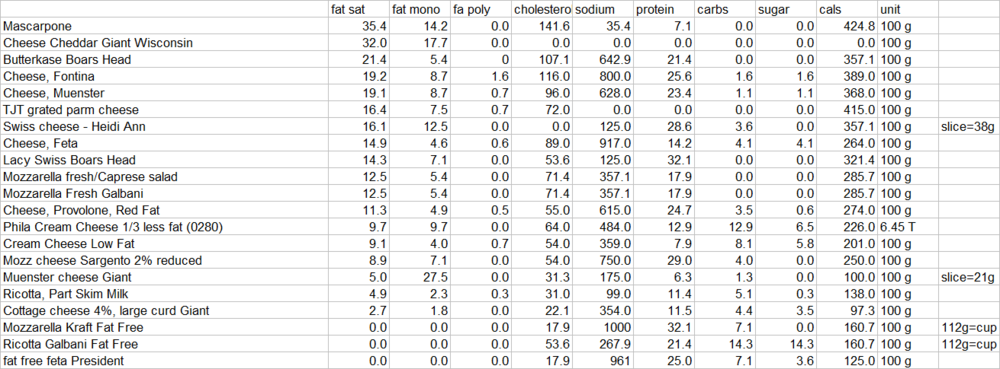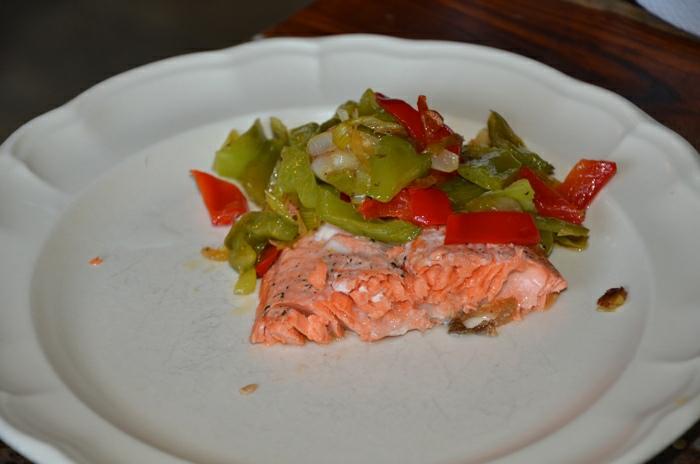-
Posts
1,608 -
Joined
-
Last visited
Content Type
Profiles
Forums
Store
Help Articles
Everything posted by AlaMoi
-
endorse by A-Lister celebs . . . . sends me running for the hills.
-

Disruptive technology may change the whisk(e)y industry - Economist mag
AlaMoi replied to a topic in Spirits & Cocktails
per the TV shows . . . . the done-gone legal moonshiners demonstrated an extremely accelerated process to turn moonshine liquor into 'fine aged whiskey' so, the jury is out. but anyone producing an inexpensive bottle of booze that is +/- not indistinguishably from the real deal, to the average tongue, will have a winner. -
there's a whole lotta' ifs-ands-buts to this topic. a family member had a "farm store" in the middle of (nothing but green in every direction) he finally had to call it quits and fold the place because the 'big box / discount retailers' were selling the same products for less than his wholesale/dealer price. so - "the middle of nowhere" definition is a bit fluid.
-
UK NHS has salt/sodium intake guidelines. something like 5,000 mg / day salt. US / FDA has not published guidelines - but health oriented organization (like Heart Association) talk numbers like less than 1,000 mg essentially, there are no good data / science based recommendations because apparently the human condition varies too much.
-
fwiw, if you want to dig deep(er) this has piles of detail, pictures, "approved" names + alternate names + NAMP & IMPS https://www.thelivestockinstitute.org/uploads/4/9/9/2/49923305/beef_urmis_guide.pdf I have a list of "fancy marketing names" but the source is now behind a 'wall' (source: www.meattrack.com/URMISfancifulNames.php) the UN Guide to stand beef names in various languages https://www.unece.org/fileadmin/DAM/trade/agr/standard/meat/e/Bovine_326Rev2E_2016.pdf (pg 23 has the bavette) this doc present the Latin American names https://www.usmef.org/export-resources/intl-innovative-cuts/international-beef-cuts-nomenclature-guide/
- 1 reply
-
- 1
-

-
sigh. been there doing that . . . there are a couple decent tasting low/no fat cheese - but anything involving 'melting' is a challenge. here's my list: it's a bit ad hoc so there's gaps. cholesterol & sodium is mg; all else g
-
look at "citrus peelers" - any number of cute plastic doohickies with hooks / curved blades / etc. one issue is whether a cut in the skin is not wanted. if you're going to peel it comma anyway, the point of a sharp knife will cut the plastic longwise pretty quick. I usually get it started, then 'invent and peel the plastic back on itself' - mostly because we typically only use 1/2 at a go.... that way the other half stays 'wrapped'
-
and WHO - when publishing their "may cause" findings - ignored data/reports they commissioned that disputed the claims, because it had not been published for at least six months. one is free to question the motives of their timing and the agendas of the people leading the charge. it is not uncommon in USA for juries to award spectacular trillions in awards which evaporate on appeals when companies force the issue of real facts and real data, not just what the plaintiff presents. another 50-100 years we will probably find out what is true and what is imagined. altho I'm not big pesticide fan, given the amounts of RoundUp used commercially and by homeowners, if it caused cancer we'd be seeing tens of thousands of cases.
-
hopefully you'll keep us posted how this all works out. after many years of 'just chef knifing it' I got a 7" Santoku - which very rapidly become my fav for vegetable prep. the Santoku has the 'flat' length of a 10" chef's (+/-) but is a lot more dexterous. not sure how I would do with the 'totally flat' edge of the Nakiri style vs. the Santoku, which has a very shallow 'belly' I read on the Wuesthof site the Nakiri is delivered with a 10 degree edge - that should be ueber sharp. using an EdgePro I brought my Santuko down to 18 degrees - and it performs seriously 'sharper' than a chef's at 21 degrees.
-
the usual and customary suspect with grills/outdoor stuff is spiders/etc inhabiting the piping during idle periods. nests/egg sacs /etc block the air flow.... the portability factor can come into play if all the components / air flow gates / etc were not snugged down after proper adjustment/set up. if loose those parts can bounce out of position a lot easier than on a kitchen stovetop....
-
if any pan heating on top of a gas flame is collecting soot, there is absolutely no question - the burners need adjustment/maintenance.
-
I use a 10" slicer style (ie not a wide blade) - it slips under the crust, you rotate around, frees the crust, then slide it off the pan. as to options - you can also use parchment paper under the crust. butter both side of the paper - it'll slide off the metal springform bottom.... (I would not use cardboard tho - you can 'plate' it onto a cardboard round after baking.)
-
a tip from my grandfather: plant tomatoes in the poorest part of the plot - a soil that's too good results in a lot of stem/leaves, not so many tomatoes.... sometimes people get fertilizer happy and have huge plants but less harvest.
-
the internet has many experts
-
yes, seriously. borosilicate glass aka Pyrex will withstand about a 340 degree F temperature 'shock' before the thermal stress exceeds the mechanical strength. the new stuff from tempered soda lime glass is not as resistant to thermal shock. anything liquid in the pan is not over 212'F plus a bit for 'contaminants' the max temp differential applies to "perfect" condition - any nicks, chips, etc cause stress risers and it'll shatter 'quicker' normal wear and tear on 'the good old stuff' most likely has resulted in those kinds of nicks - even microscopic chips count when dealing with stresses in glass.... there are lots of reports exceeded only by the hysteria on the topic - but my all time favorite is the often cited Consumer Reports research which, in the best imitation possible of Myth Busters . . . could not cause it to shatter so they ignored all the rules and managed to shatter one. if it didn't break, use more C4.....
-
if you're going to consume it raw, then freezing is recommended - required by law in commercial settings (probable unknown exceptions...) sushi is typical so thin sliced or small cubed the difference in texture from freezing is not nearly so noticeable. cooked is not such an issue. the FDA, which specializes in ashen foods, recommends 170'F - but I don't go that high. fisheries like the Scottish salmon industry are zealous about their reputation and reportedly have extensive inspections in place. 'wild caught' by some one some where . . . . that one might wish to cook to the higher temps.
-
arugula would work well if you can't find sorrel.
-
one should only speak in generalities because there all kinds of situations and variations.... thick pieces are quicker to handle with a push cut - you have more leverage. start tip down, slice forward while pushing heel down. thinner cuts are best done with a pull cut - if pushing the meat likes to run away from you. sharp knife, tip down, slice on the pull - as need one can hold the far edge still. sharp knife is more important in the pull than the push, but perhaps that's best expressed as 'sharper' - a dull knife is not a good start for meat cutting.
-

Where to find great pastry in Vienna & Salzburg, Austria?
AlaMoi replied to a topic in Elsewhere in Europe: Dining
on any street corner. Konditorei aka coffee and pastry shops abound. anything off the tourist path will have bazillions of stuff - way more than you can eat - and better pricing. a search "austrian pasty shops" will produce a lot of results. just be sure to have a drool bib handy. let us know her reaction - because European pastries are not as sweet as they look, nor as sweet as American tastes desire. but sure is good stuff. -
under the broiler will do it just about every time. the glass rim probably got a lot hotter than the stuff in the pie plate, pouring the 'cold' juice out shocked the hot rim more than it could take. "Here are just SOME of the Pyrex® Safety and Usage Instructions: • “NEVER use the product on top of a stove, under a broiler, in a toaster oven or place over oven vent or pilot light.”
-
we are very fond of salmon - and good salmon can be tricky to get. supermarkets normal have only the farmed stuff, which is marginal. sometimes they have wild caught sockeye - but only 'from frozen' and freezing definitely affects the quality. but we do have a fish monger in town. excellent quality, big prices, never frozen.... farmed Scottish is almost always on the table - and it is far superior to the supermarket farmed stuff, wherever they get that from.... mucking too much with salmon basically covers up the flavor. here's salmon steak (a fav) stuffed with scallop, and a onion/sweet pepper medley on pan seared&oven finished....
-
I couldn't pass up the 4mm #27. now , , , it's my first foray into "black iron pans" - so I've got no background to compare to other similars comma however: (side note: natural gas cooktop....) - sides are relatively vertical making for a (large-larger-largish) flat area in relation to it's overall diameter - compared to a Bourgeat 3690.28, it pre-heats faster - compared to an ancient Griswold, it pre-heats at warp speed - seasoning: I just cook fatty stuff in the pan until . . . it's about 1/2 'perfectly' seasoned at the moment - the sear on scallops, roasts and crab cakes is superb. - it sears better than the ss/copper (? spread heat _too_ fast...?) and 'easier' than the cast iron (heats faster / sears 'faster') - releases quicker than either of the CI or ss/copper. I'm very pleased with it.
-
-
went there did that missed ya'!
-
for bleach on tools, etc: 1 part bleach + 9 parts water (by volume)








